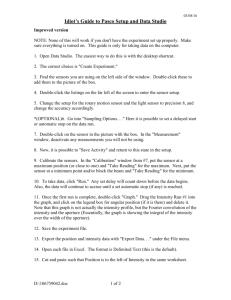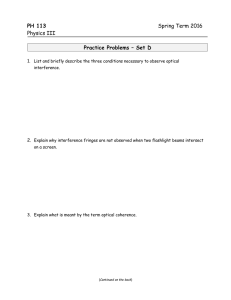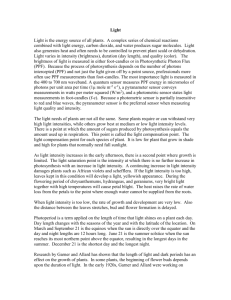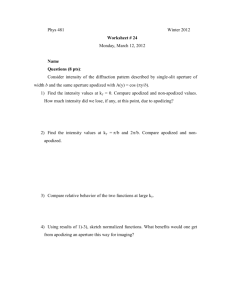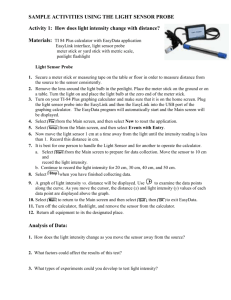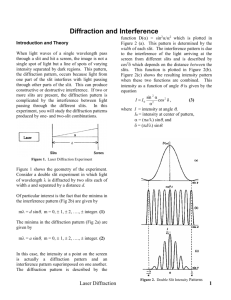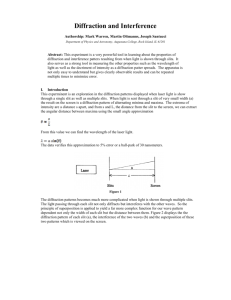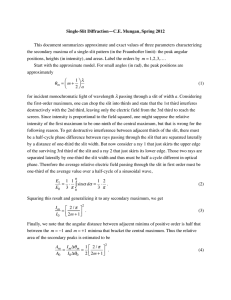hoffman slit
advertisement
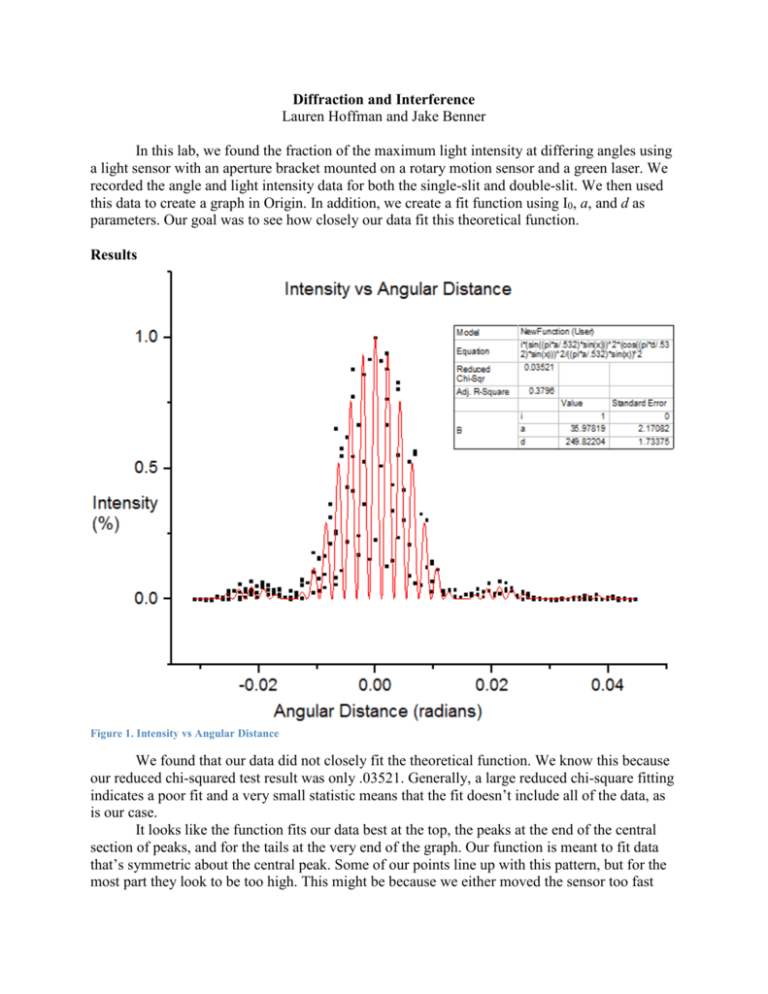
Diffraction and Interference Lauren Hoffman and Jake Benner In this lab, we found the fraction of the maximum light intensity at differing angles using a light sensor with an aperture bracket mounted on a rotary motion sensor and a green laser. We recorded the angle and light intensity data for both the single-slit and double-slit. We then used this data to create a graph in Origin. In addition, we create a fit function using I0, a, and d as parameters. Our goal was to see how closely our data fit this theoretical function. Results Figure 1. Intensity vs Angular Distance We found that our data did not closely fit the theoretical function. We know this because our reduced chi-squared test result was only .03521. Generally, a large reduced chi-square fitting indicates a poor fit and a very small statistic means that the fit doesn’t include all of the data, as is our case. It looks like the function fits our data best at the top, the peaks at the end of the central section of peaks, and for the tails at the very end of the graph. Our function is meant to fit data that’s symmetric about the central peak. Some of our points line up with this pattern, but for the most part they look to be too high. This might be because we either moved the sensor too fast across the track (resulting in a lower intensity because we didn’t give it enough time to register the light), or too slow (meaning that the sensor picked up the maximum intensity available for that angle. I would think this is a good thing but we weren’t consistent with it for every run). We decided to use 0 < I0 < 1.2, 0 < a < 45, and 0 < d < 255. When we estimated too high for a and d, our fit function only covered about half way up the graph. The lower the values we used, the better the fit. The errors for a and d were 2.171 micrometers and 1.734 micrometers, respectively. The value for d from our data was within the accepted value, but the value for a was not. Deciding on the criteria for I0 was a different case. When we first tried the equation, using 1.2 resulted in a bad function when the criteria for a and d were too high. Keeping the other criteria constant, we used .8 but the function fit for single slit diffraction rather than double slit. We decided to try and re-input the same equation we’d been using for the function again, and when we went back to 1.2 and lowered the other values, we got the result in Figure 1. We aren’t really sure why this happened, but we may have lost parentheses when we redid the equation, thus leading to our final fit result. The error in I0 was 0. Our initial values for I0, a, and d were 1, 40, and 250, and we fixed I0 so that it wouldn’t vary unlike a and d. Also, when we went through other iterations, our fit function did not change and chisquared stayed the same. We aren’t sure why this is, but we are happy enough with this result.
